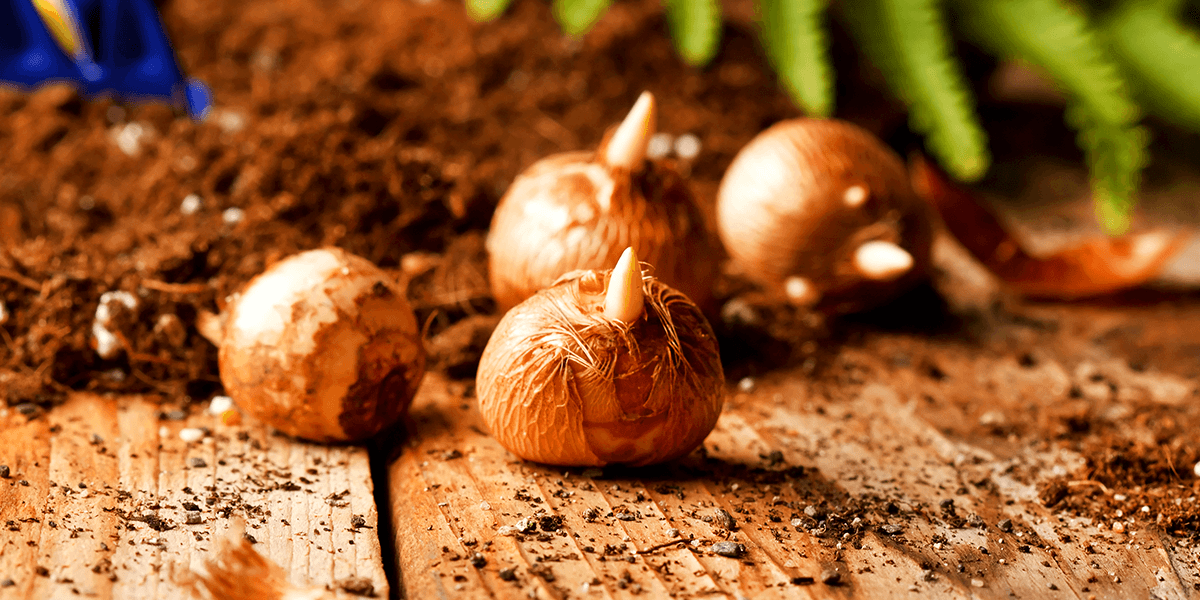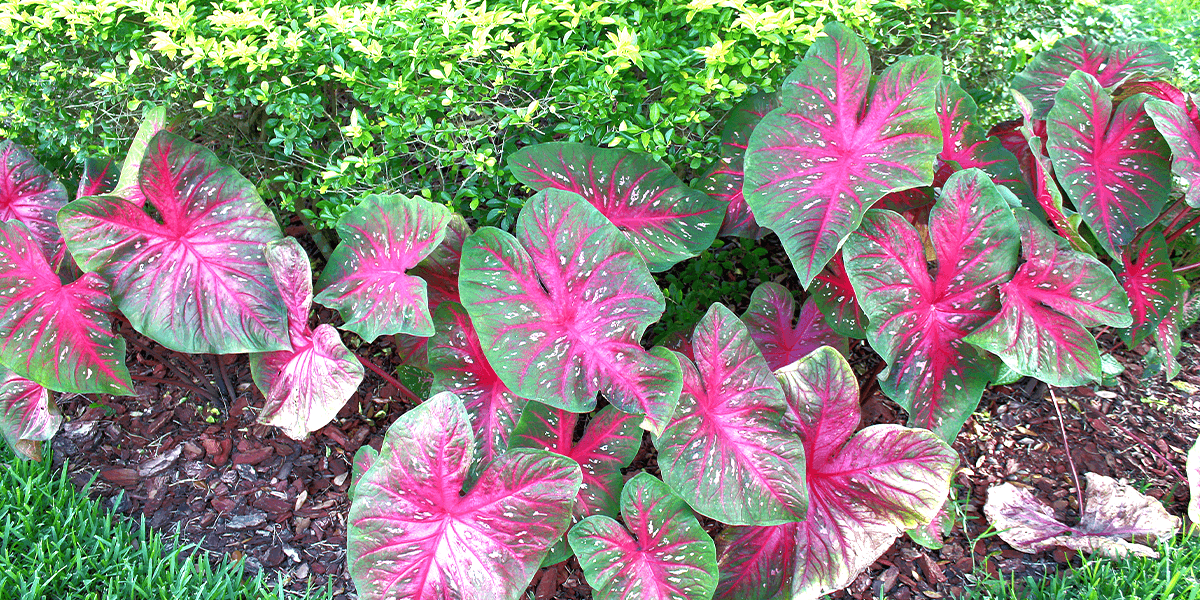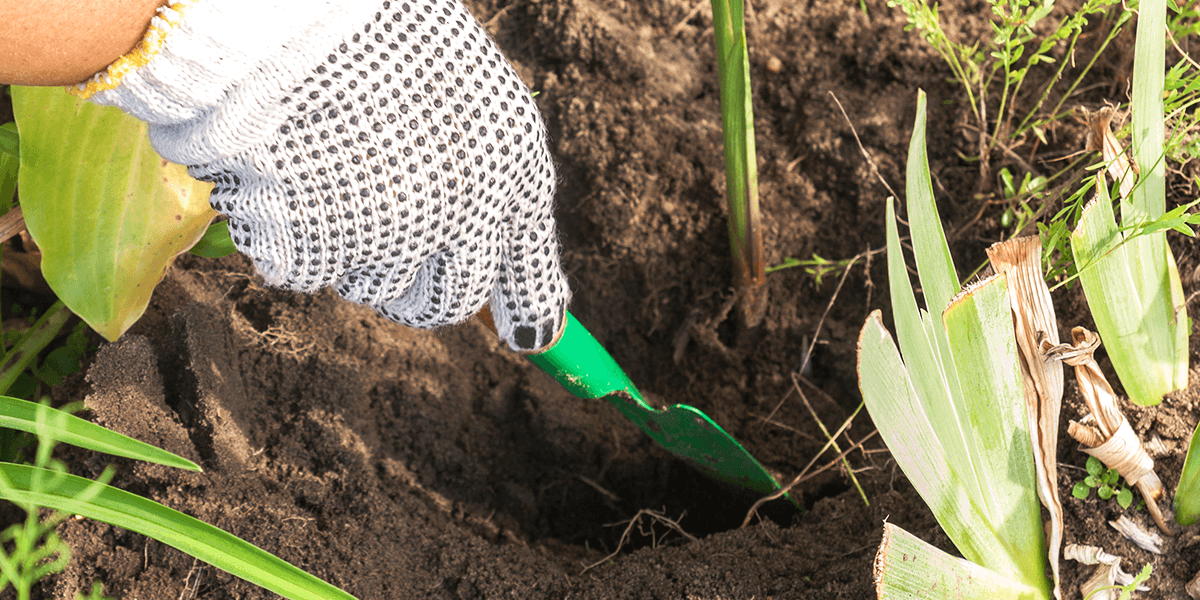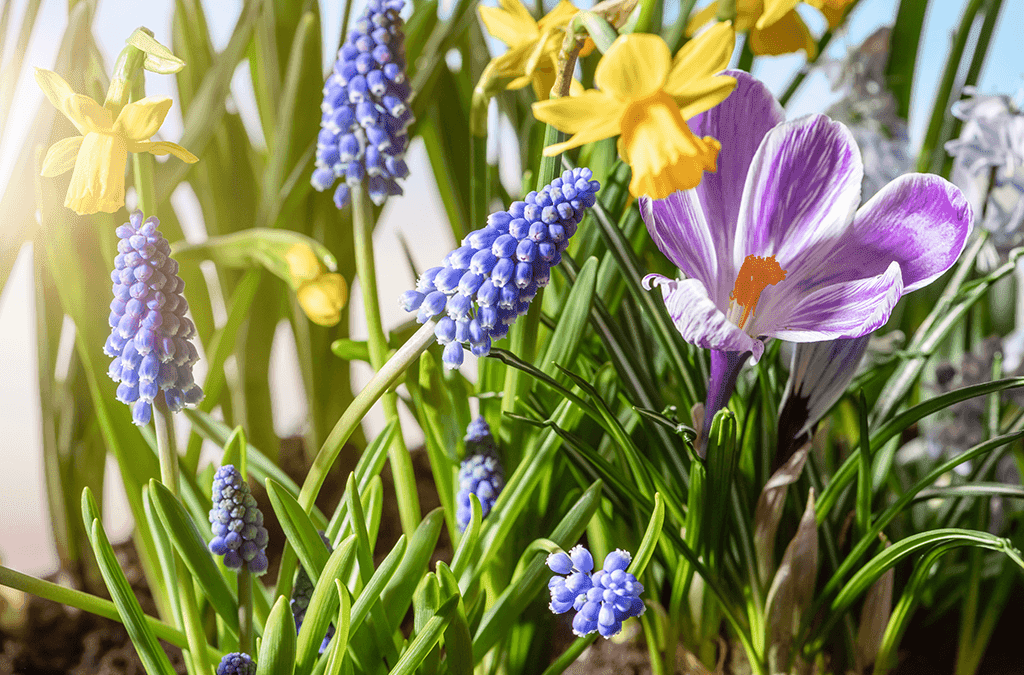Bulbs are those beautiful perennials that grow from a fleshy root, bloom each year, and die back to the root. Some bulbs are “hardy,” which means they survive our winter. Others are “tender,” meaning they won’t overwinter in Illinois without some help. Which ones are which? And how do you protect the tender perennials? Read on for the answers!

The Basics of Bulbs: What Are They?
If we’re going to get technical, a bulb is a flower with an underground, fleshy storage organ. Often, the root is shaped like an onion, which is one bulb that made it to the kitchen. Sometimes they’re more irregular, like the rhizome of an iris. The important part is that they store energy in the root, bloom for a period of time, absorb energy through their leaves, and then die back to the root with enough reserves for next year.
What is a Hardy Bulb?
Hardy bulbs are the tough bulbs that keep returning year after year. A lot of them bloom in the spring, and some are the first flowers of the year, like crocuses and tulips. These bulbs spend the winter outside in Chicagoland no problem. In fact, many need a period of frosty temperatures in order to bloom the following year.
Examples of hardy bulbs include: crocuses, snowdrops, tulips, daffodils, hyacinths, grape hyacinths, alliums, and iris.

What is a Tender Bulb?
Tender bulbs are all those other bulbs that bring beautiful flowers to the garden, but can’t make it through our winters. They don’t need the cold and don’t want it. In warmer climates, they are perennials, but if we want these tender ones to bloom again here, we have to give them special care over winter. Alternatively, many gardeners grow them as annuals.
These tender perennials include: dahlias, callas, elephant ears, caladiums, cannas, and tuberous begonias.

How to Protect Tender Bulbs Over the Winter
If you want to keep your tender perennials for next year, you can dig them up and store them indoors. Just like storing vegetables, you need to follow a few steps to protect them from rotting—here’s how to master this easy process!
- Dig Them Up: After a light frost turns the leaves brown, dig up the tender perennials within a few days. One beauty of bulbs is that they’re easy to dig up. Be careful to keep the bulbs free of cuts and bruises for the best success in winter storage.
- Clean Them Off: Shake off or gently brush away excess soil from the tender perennials, but don’t wash them. A little dirt is no problem, and keeping them free from moisture prevents rotting over winter. Discard any damaged bulbs and keep any insects outside.
- Cure Them: To protect the tender perennials over winter, most bulbs need to be cured before storing. Let them dry out in a dark room at 60-70°F for 1-3 days.
- Store Them: After curing, place the tender perennials in a box of sand, peat moss, sawdust, or wood chips. Keep the lid loose or off so that moisture doesn’t build up inside. Keep the bulbs from touching each other, so if any rotting occurs, it doesn’t spread. Most importantly, keep them in a cool, dark room, at 35-50°F.
With these simple steps, you don’t need to kiss your tender bulbs goodbye in the fall. You can protect them until next spring, enjoy their blooms again, and repeat the process for many years to come.
The fall is an important time for all bulbs, whether you’re planting hardy bulbs for next spring, or digging up those tender perennials. It’s these seasonal tasks that make gardening so pleasurable, and that we look forward to year after year!
Platt Hill Nursery is Chicago’s premier garden center and nursery in the Chicagoland area.


